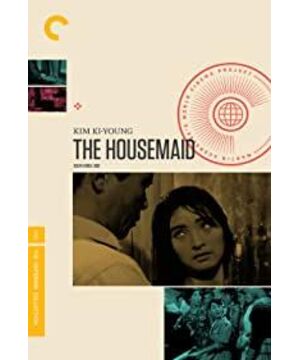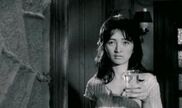foreword
Today, the Korean film industry is one of the best in Asia, and independent films have a distinct Korean style. But on closer inspection, the real development time of Korean films is only fifty or sixty years. In this short half-century, various directors and films have appeared, forming a rich and diverse face of Korean cinema. This time we will sort out the Korean films that can represent the current era and see how it developed to what we see today.
text
On October 27, 1919, South Korea's first film entered the historical stage in the form of an event photo series. A chain play is not a movie in our current concept. The image only appears on the stage in the background of the story, and the actors perform live performances in front of the image. It can be said that it is a form of combination of stage play and image.
Until the late 1950s and early 1960s, Korean films finally ushered in a period of prosperity in the true sense, with rapid development in both quantity and quality. In 1951, there were only 15 films produced in South Korea. By 1959, it had reached 111 films, a 10-fold increase in the total number of films produced, and by 1969, it had exceeded 200 films. The most important directors in Korean film history, such as Shin Sang-ok, Yu Hyun-mu, and Kim Qi-young, also emerged at this time. These directors no longer rely solely on the plot to build the content of the film, but really make use of the language of the film and begin to pay attention to the picture, setting, and scene scheduling.
In 1960, the release of [Second Girl] shocked Korean audiences. In this film, Jin Qiyong takes the family as the background, and presents scenes of sexual desire and death to the audience in a unique and treacherous way, which not only achieved great success at the box office, but also established the film of Jin Qiyong The master's narrative style also shows the characteristics of Korean films that have continued to this day, that is, its reality.
The next girl is the name given to the maid in the house in Korea. In the 1960s, the Korean economy developed and the class was divided, and many women from the rural areas of Gyeongsang-do and Jeolla-do entered Seoul. In the face of the few job opportunities, they choose to be the next daughter. In the face of the dominant male master in both status and gender, the disadvantaged female becomes the private property of the male master, and is often reduced to a sexual tool. On the other hand, in a society bound by strong morality, women also want to use this relationship to change their social status.
In a patriarchal society, low-status women would trade sex for anything they wanted. This has also become the blueprint for the creation of many Chinese costume TV dramas, and the maids have the dream of a sparrow turning into a phoenix once she goes to bed. In fact, in more cases, the exchange of sex is not about class crossing at all. In [Forrest Gump], Forrest Gump's mother went to bed with the principal just to let Forrest go to school. In [La Traviata], Margaret's glitzy life in exchange for sex was only a mirror image. This was not entirely willing, but they had no choice but to do so.
Jin Qiyong builds a typical Korean middle-class family in the movie. The male master is a music teacher in a factory, and the mistress does sewing work at home to earn money to support the family. They have two children, a boy and a girl, and they live happily in Together. They worked hard together and finally changed to a big house with two floors. The hostess couldn't take care of the housework, so they had to hire a maid.
The first thing a girl does when she enters the family is to check the kitchen cabinets one by one. When she saw rat poison, she stuck out her tongue and licked her lips weirdly. Then she killed a mouse with her bare hands. After the host reprimanded her for "grabbing mice with rat poison", she went to the cabinet to get rat poison, and touched her mouth lightly with her hand before taking out the medicine. The shot then cuts to the rat eating rat poison while shaking and dying. This series of pictures can't help but make people feel a chill, and it also implies that the next girl is an evil mouse in this family. The female used rat poison to kill the mouse, and finally drank the rat poison with the male owner and died.
Jin Qiyong expresses the class gap in various aspects. For example, the hostess who represents a good wife and a good mother in a traditional family always wear hanbok, while the lower daughter has been wearing a new dress since she came to the family.
For another example, in this big two-story house, the stairs that separate the first and second floors are the gap between "upper class" and "lower class". The next woman dragged the male host from the first floor to the second floor again and again, showing her urgency to cross the class.
In addition, Jin Qiyong arranged three deaths on this staircase. One is that the next girl rolled down the stairs and her child died in the womb, which meant that the next girl's attempt to cross the class would be fruitless. The second is that the son of the hostess, after being frightened by the servant girl, slipped and rolled down the stairs to his death, which marked the breakup of this once-happy middle-class family. In the end, the next girl and Dong Zhi both drank the rat poison. With the last bit of strength, Dong Zhi went to his wife's room. He dragged down step by step, and finally died on the stairs with his head upside down. This is the ending of the film, and it gives an answer to everything the film wants to explore. The next girl will eventually be unable to cross the class, but her efforts can create a terrible tragedy.
The lower girl tries to leap over the class, and the hostess and the hostess at the top of the class fear the fall of the class. The conflict in this is self-evident, and the family finally collapsed due to the active and morbid intervention of the girl in the family.
The film caused a stir not just because of its horror, but because its story was so close to Korean society at the time. Husband, wife, children, daughter-in-law, big house, this is the standard sample of a middle-class Korean family in the 1960s. Jin Qiyong's films have never just told the story of an independent individual. Behind each of his characters are thousands of similar people. The conflict of roles becomes the conflict of groups and the opposition of classes. Men and women, women and masters, carnivores and herbivores, they are typical symbolized characters drawn from each social class, not individual cases.
This kind of film that reflects the current social reality has given Korean audiences a blow, and made people who are immersed in their daily lives to re-examine their lives from an outsider's point of view. This realism theme has also become an important theme in Korean films, which has continued to this day.
In addition, the exaggerated and treacherous expression techniques used by Jin Qiyong in [Second Girl] have also influenced a group of directors such as descendants Park Chan-wook and Feng Junhao. The plot of the film itself is really impressive, so Lin Changshu remade a version in 2010, and the evaluation is far from the original version [Second Girl], but whether it is good or bad, it is up to you to see it.
First published in the January 2019 issue of "Watching Movies"
Cong Miao
Please do not reprint
View more about The Housemaid reviews






